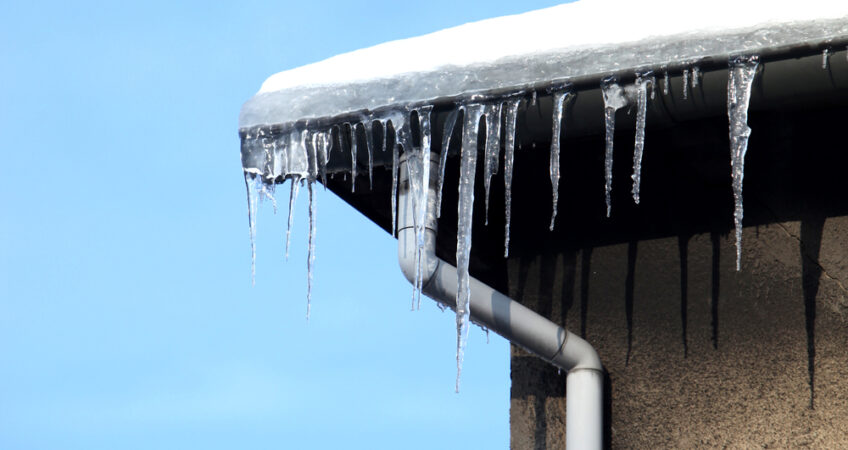Seeing icicles hanging from your roof can make your home look like something out of a winter postcard. Unfortunately, those icicles could also be a signal that ice dams are building up. The icicles themselves aren’t the problem, but they happen under the same conditions as ice dams, so it’s important to make sure your roof isn’t developing a problem. Keep reading to learn the dangers of ice dams and how to prevent them.
Ice dams are thick sections of ice that occur when water along the eaves of your home freezes, partially melts, and freezes again, in a cycle. The more this happens the bigger the dams can get, and eventually the ice and melting water can push its way into your home’s roofing structure.
When it snows, the warmth from an improperly insulated attic melts some of the snow that collected on your roof, and the melted snow turns to water and runs down toward the eaves and gutters. The eaves aren’t as warm as the roof above the attic, so the water freezes again and turns to ice, where it continues to build up over time.
Eventually, the water running down the roof won’t be able to get to the eaves anymore because there’s already a buildup of ice. That water stays in liquid form and remains on the roof near the eaves, where it could get under the shingles and start to do damage to your roof. The ice itself can also cause damage from the excess weight being placed on eaves and gutters, but it’s the water getting underneath shingles that is the biggest concern.
You can prevent ice dams by making sure your roof is in good shape and your attic is properly insulated, so your roof stays the same temperature as the outdoors and doesn’t get too warm. Increasing the ventilation on your roof also helps remove warm air and balance the temperature, so you can have peace of mind for the winter months.
If you’ve concluded that you are in need of roof replacement in the Salem or Willamette Valley area, contact RoofRite today!

